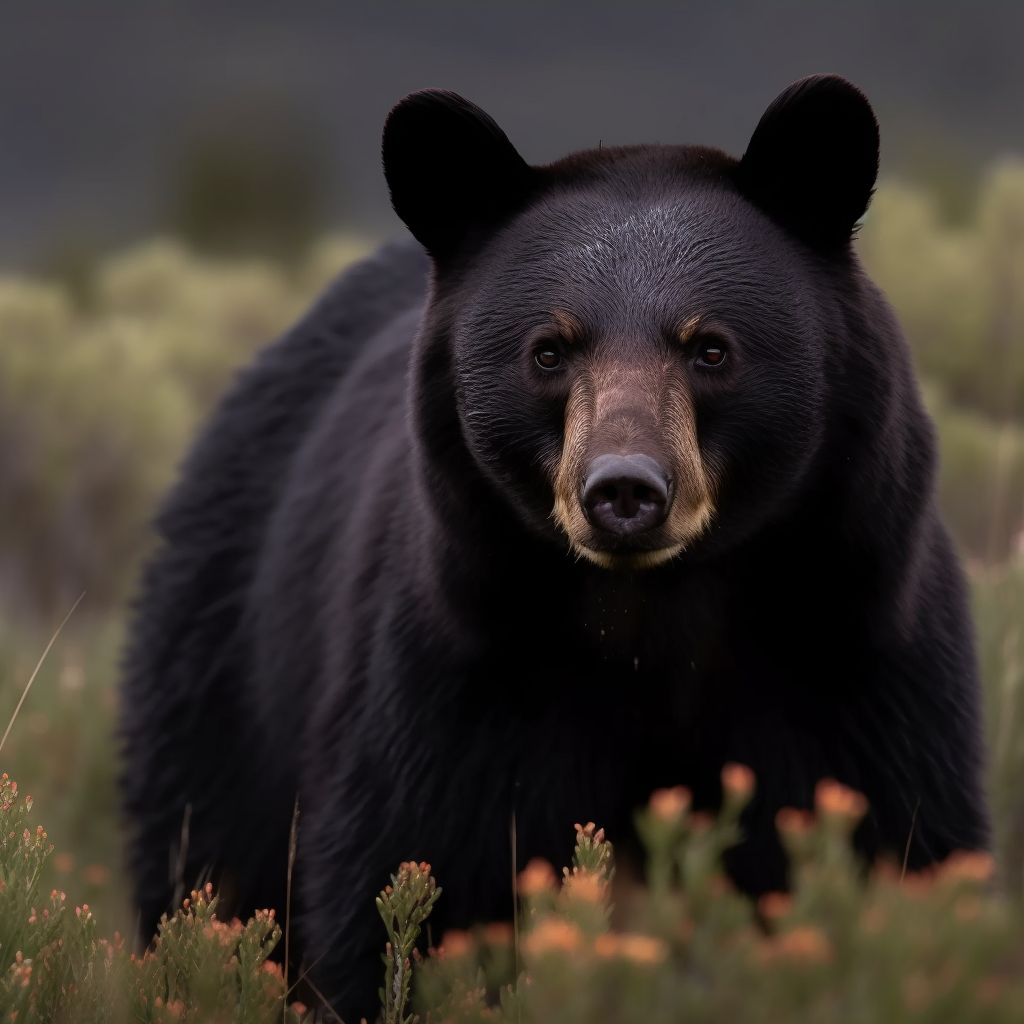Black Bear
The American black bear (Ursus americanus) is a medium-sized bear species native to North America. As the continent's smallest and most widely distributed bear species, black bears can be found across a vast range of habitats, from the dense forests of the East Coast to the mountains and woodlands of the West. The black bear plays a significant role in the natural environment and is an important component of the ecosystem.
Physical Characteristics
Adult black bears typically measure between 4 to 6 feet in length and stand 2 to 3 feet at the shoulder when on all fours. Males are generally larger than females, with adult males weighing between 130 to 660 pounds and females weighing 90 to 400 pounds. Despite their name, black bears exhibit a variety of fur colors, ranging from black and brown to cinnamon and even white. Their fur is dense and shaggy, providing insulation and protection from the elements.
Behavior and Diet
Black bears are primarily nocturnal creatures, although they may be active during the day depending on factors such as food availability and Human activity. They are skilled climbers and swimmers, with powerful limbs and sharp claws that allow them to navigate their environment with ease.
The diet of a black bear consists of a wide variety of plant and animal matter. They are opportunistic omnivores, feeding on nuts, berries, and other vegetation, as well as insects, fish, and small mammals. During the fall months, black bears consume large quantities of food to prepare for winter hibernation, which can last for several months.
Habitat and Range
The American black bear occupies a diverse range of habitats across North America, including forests, swamps, grasslands, and mountainous regions. Black bears can be found as far north as Alaska and Canada, and as far south as northern Mexico.
In the late 19th century, black bears were particularly prevalent in the wild expanses of the Western United States, where Human settlements were sparse and natural resources were abundant. In these regions, black bears played an important role in maintaining the balance of the ecosystem, acting as both predator and prey within the food chain.
Human Interactions
As the human population expanded in the late 19th century, encounters between black bears and people became more common. While black bears are generally shy and avoid contact with humans, conflicts can arise when bears are attracted to food sources near human settlements. In these instances, it is essential for people to take precautions to prevent unwanted interactions, such as storing food securely and maintaining a respectful distance from wild bears.
Conservation
In the late 19th century, the conservation of black bears and their habitats became an increasingly important concern, as human activities encroached upon the bears' natural range. Efforts were made to protect the species through the establishment of protected areas and the implementation of hunting regulations, ensuring that black bears could continue to thrive in their native habitats for generations to come.
The American black bear is an iconic species that has played a vital role in the ecosystems of North America for centuries. By understanding the black bear's habits, diet, and habitat preferences, as well as taking steps to minimize human-wildlife conflict, people can work together to ensure the continued survival of this magnificent creature.

